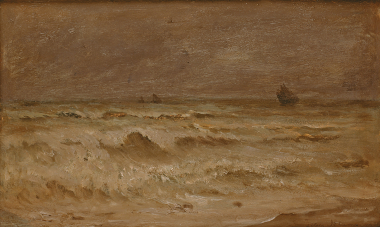Sailing Vessels and steamboats, 1874


In Sailing Vessels and Steamboats, nature`s mutability, seen in the constantly moving clouds, the rippling surface of the sea, and the ship`s smoke being blown by the wind, is rendered through the light reflected on the waves and the foam. Although the painter did not take the final step of dissolving the bright tones and outlines of the ships, by liberating himself from detailed description and by fusing color and form, he arrived at the impression of a totality. By marking the precise date its execution on the painting, Altamouras wished to declare that this specific image corresponded to a given moment in time.





